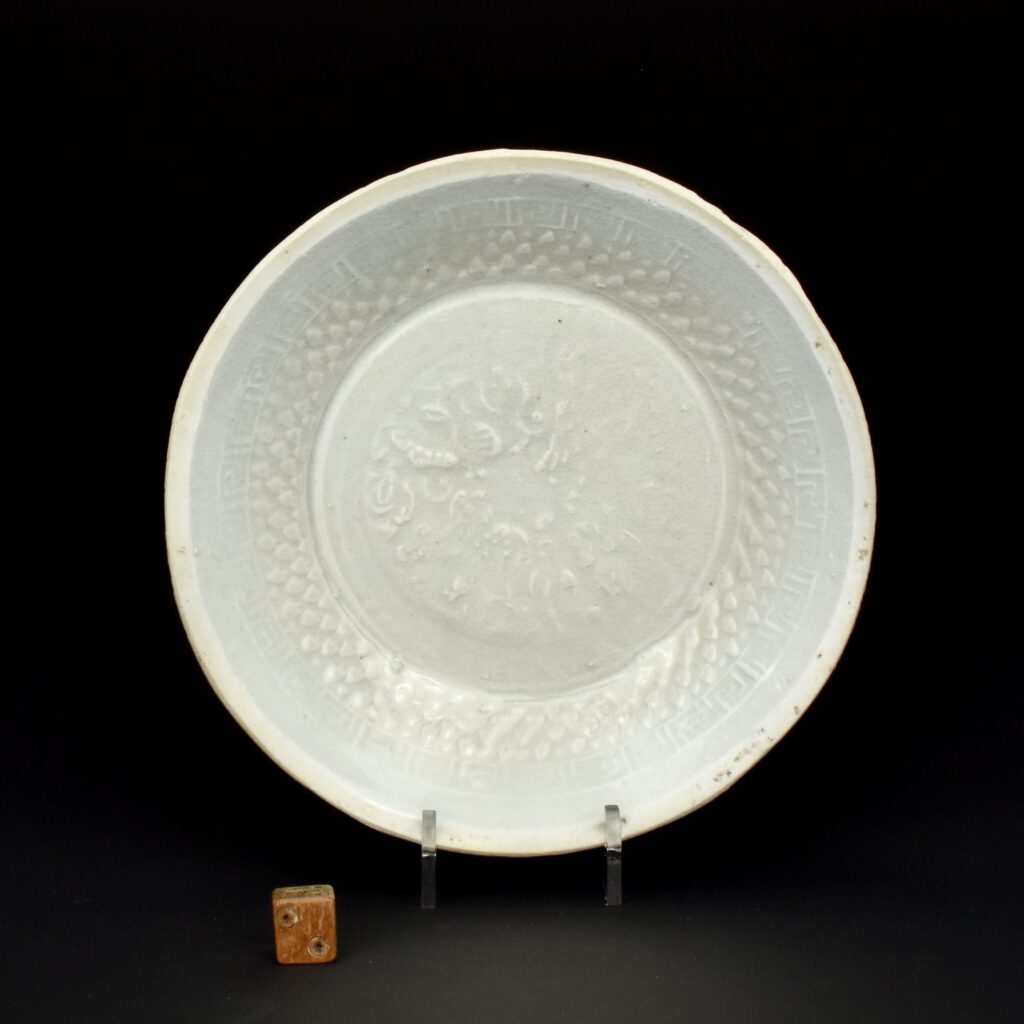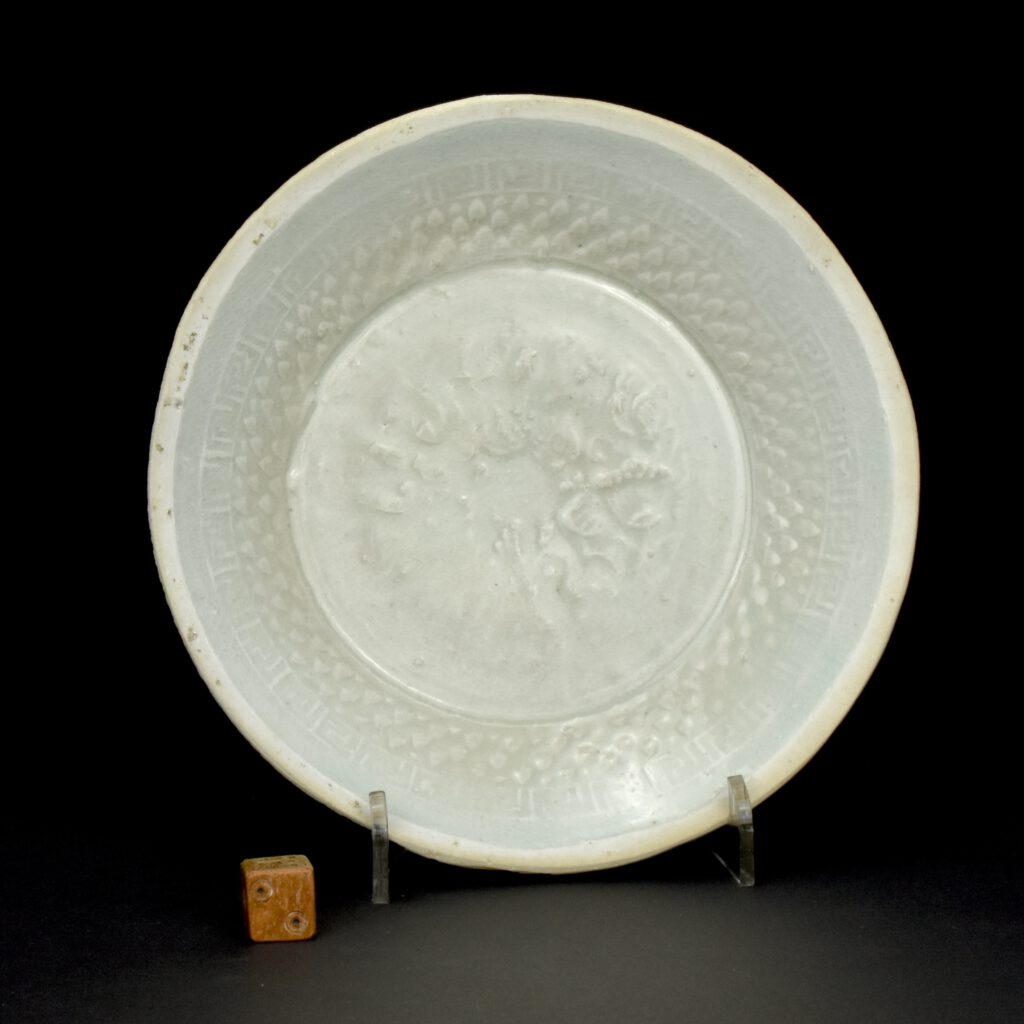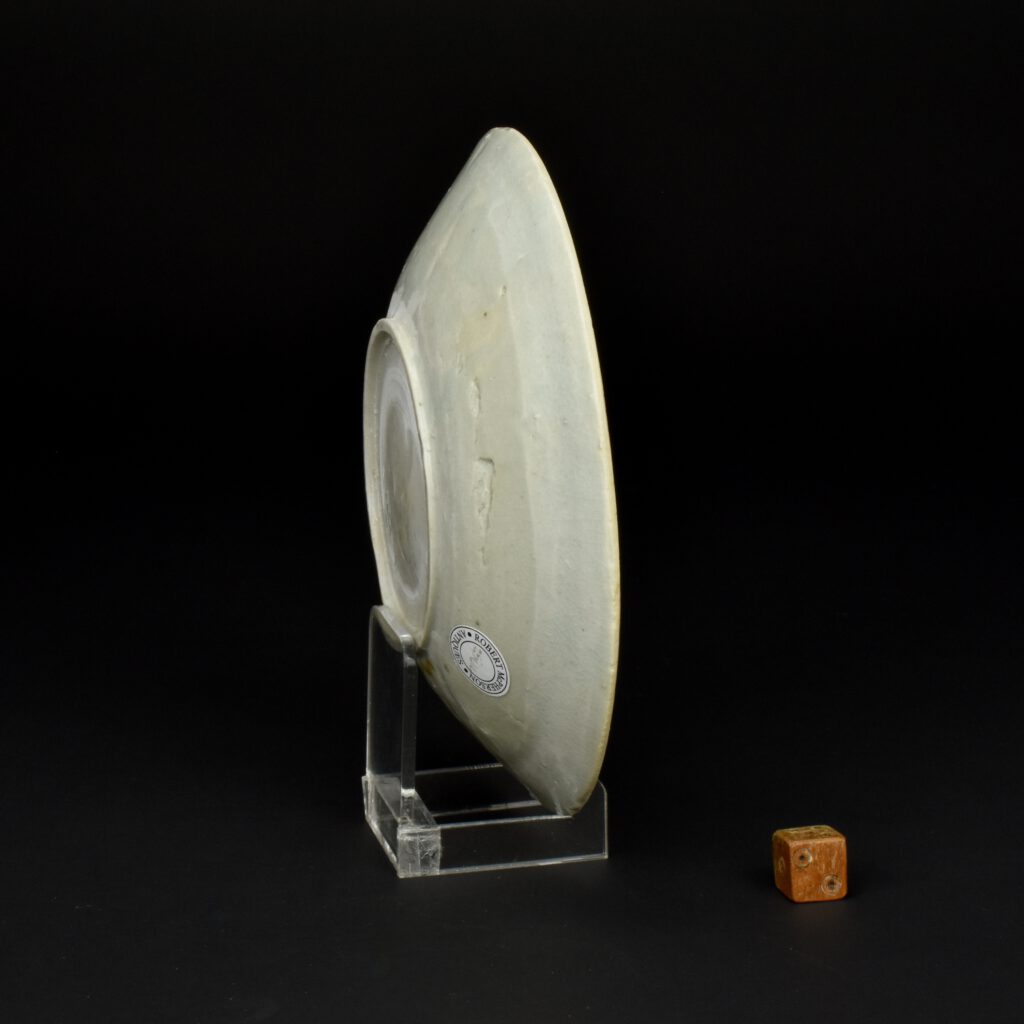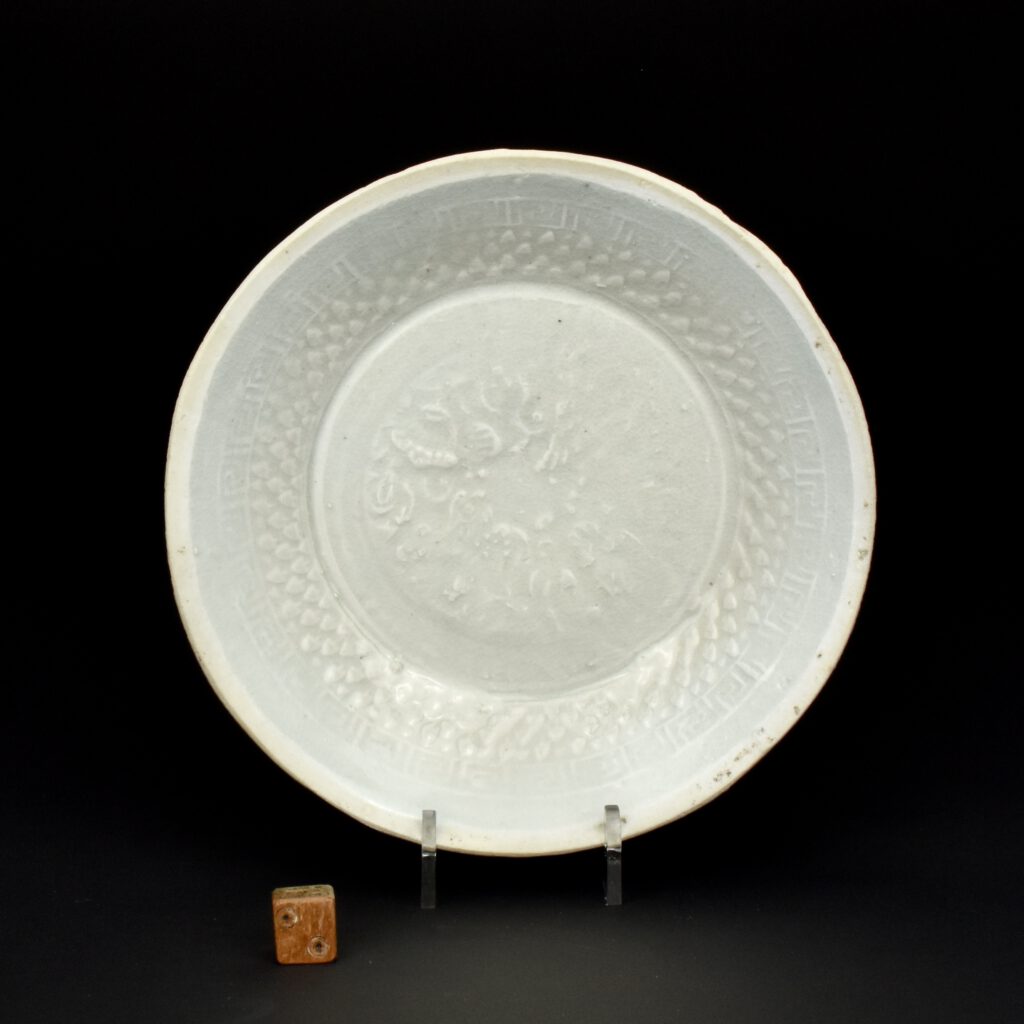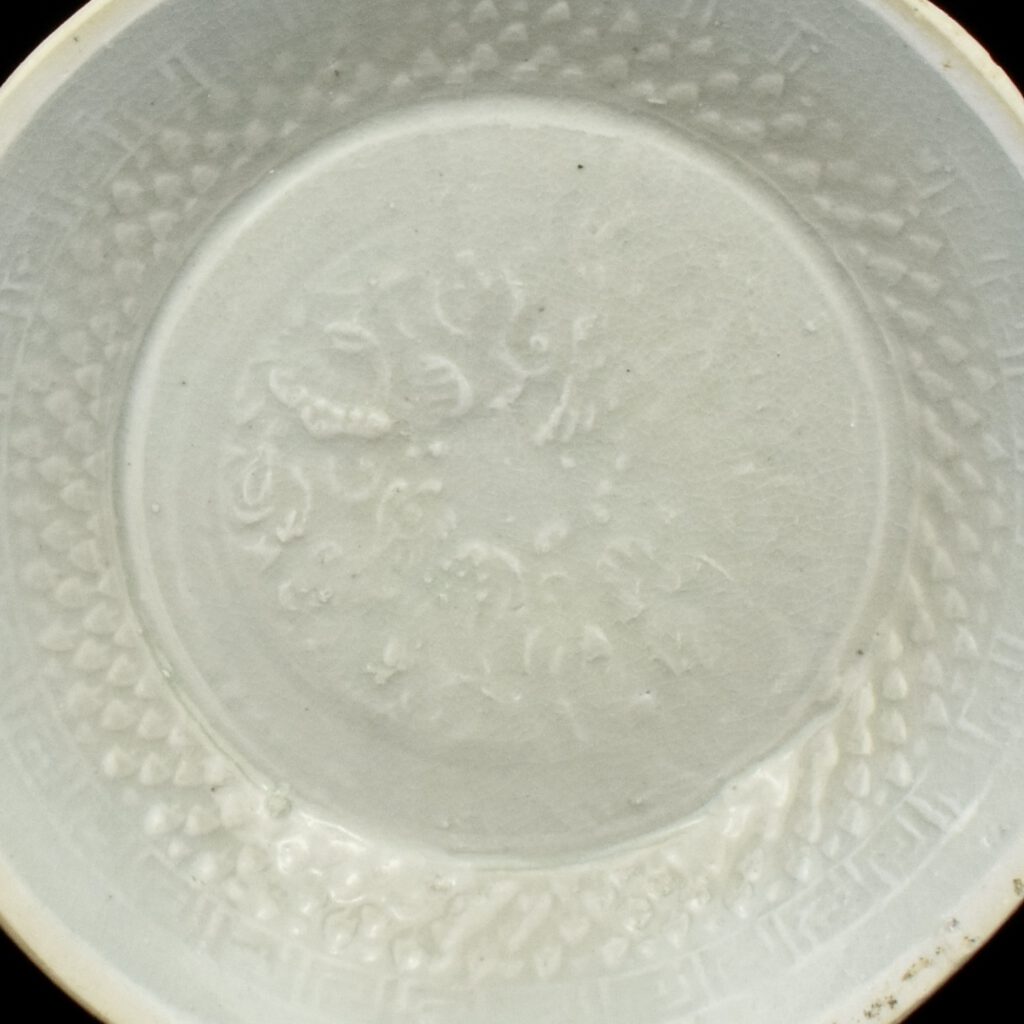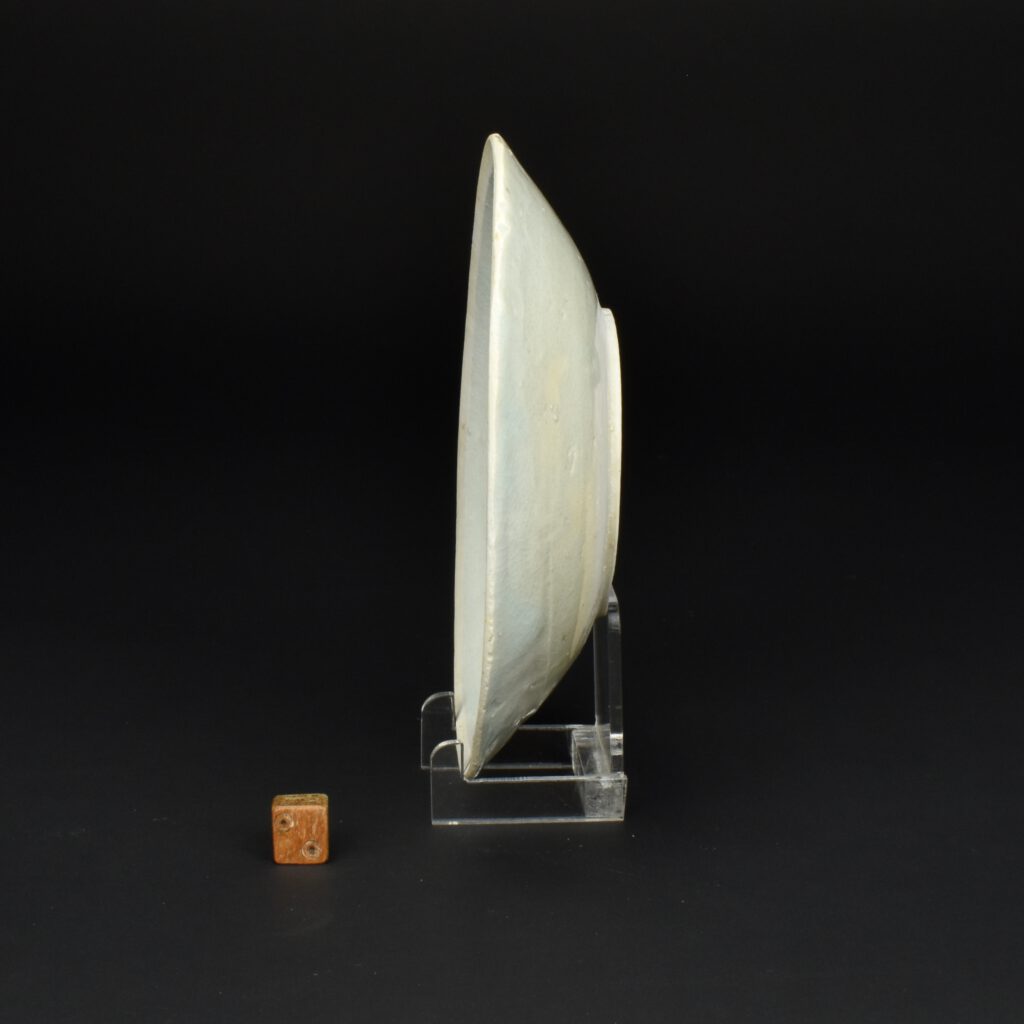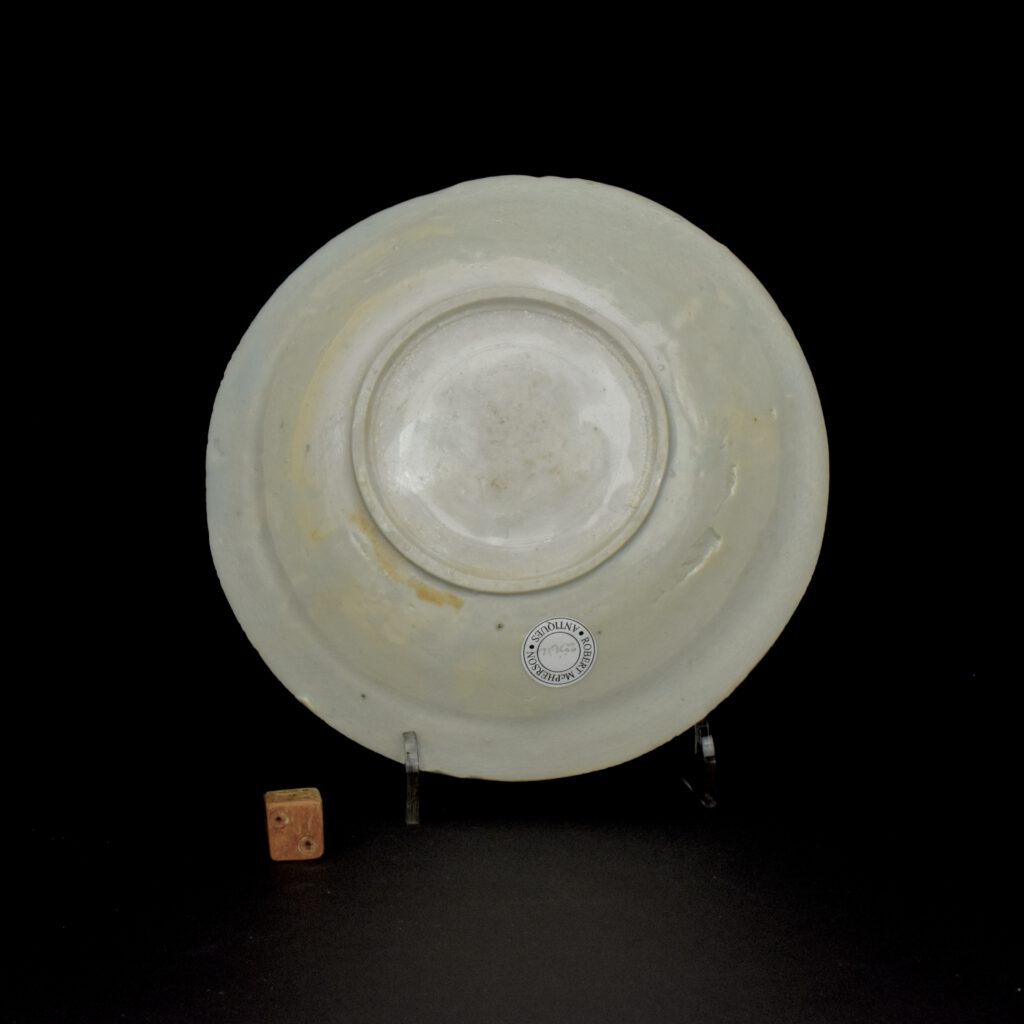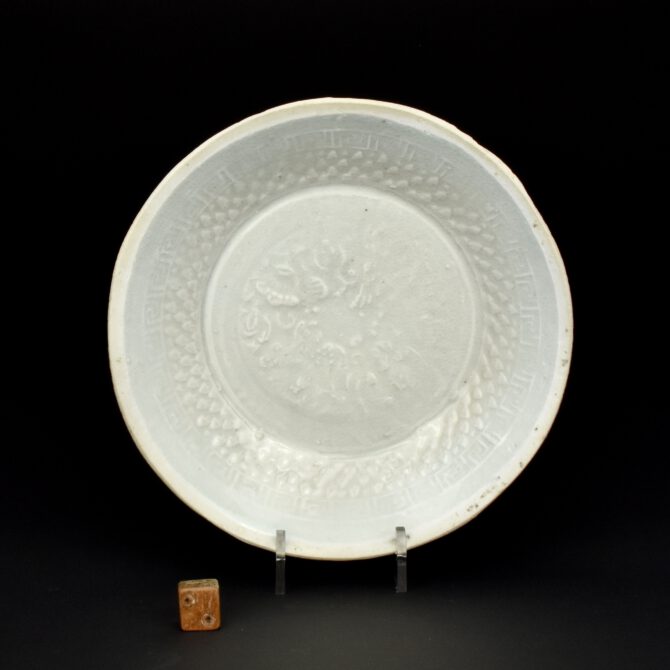
Southern Song Qingbai Dish 12th or 13th Century
A Late Southern Song or Yuan Qingbai Porcelain Dish, Late 12th to 13th Century. This thickly potted porcelain dish is moulded to the center a pool with lotus, much of the scene is difficult to see. The outer border is of a band of stylised clouds, with an inner border of ‘scales’ encircling the central design to the well. The rim of this dish is unglazed and shows minute fragments from what was a metal band. Qingbai dishes were very often fired on the rim, this had to be wiped clean of glaze, so the dish wouldn’t stuck during firing. The unglaze edge was dry, rough and unacceptable for use. The answer was a metal band, normally a copper alloy (bronze) or perhaps silver. A similar pair of dishes with scrolling foliage from a tomb dated 1194 is illustrated in Dated Qingbai Wares of the Song and Yuan Dynasties, another similar dish but with twin fish to the center is illustrated : Jingdezhen Wares, The Yuan Evolution (see References).
See Below For More Photographs and Information.
SOLD
- Condition
- In excellent condition, very minor discolouration fine crazing.
- Size
- Diameter 14. 5 cm (5 3/4 inches)
- Provenance
- From a Private Collection.
- Stock number
- 25612
- References
- Dated Qingbai Wares of the Song and Yuan Dynasties (Ching Leng Foundation,1998) page 67, item 60. An similar dish but with twin fish to the center is illustrated : Jingdezhen Wares, The Yuan Evolution (Catalogue of an exhibition presented by The Oriental Ceramics Society of Hong Kong and the Fung Ping Shan Museum, University of Hong Kong March 23rd to 31st of May 1984. The Oriental Ceramic Society of Hong Kong 1984) page page 85, item 14.
Information
Qingbai Ware : The earliest known qingbai wares were produced in Jingdezhen in Jiangxi province around the late 10th century and are characterized by faint pale-blue glazes on low, wide forms. Qingbai continued to be enormously popular and highly produced throughout the Song dynasty (960-1279) and was prevalent in the Yuan dynasty (1279-1368), but slackened during the Ming dynasty (1368-1644) until being replaced by tianbai, ‘sweet white’ ware. The initial forms of qingbai were simple bowls and dishes, but by the mid-Northern Song the forms had advanced to include a wide variety of objects used for daily life such as ewers, boxes, incense burners, granary models, vases, jars, sculptures, cups, cupstands, water droppers, lamps, grave wares, and tools for writing and painting. The precedent for the majority of these forms is found in earlier metalwork and lacquer and Rawson has suggested that the imitation of silver was the primary force behind the production of white wares, including qingbai.
Lotus : The lotus is one of the most important symbols in the Chinese art. This Buddhist emblem is a symbol of purity, as the perfect flower grows out of muddy ponds without a stain. The words for lotus in Chinese has the same meaning as to bind, connect (in marriage). In connection with 'boys' the meaning conveys a fruitful marriage with children. It is one of the Eight Auspicious Symbols of Buddhism and is the flower used to represent summer.
